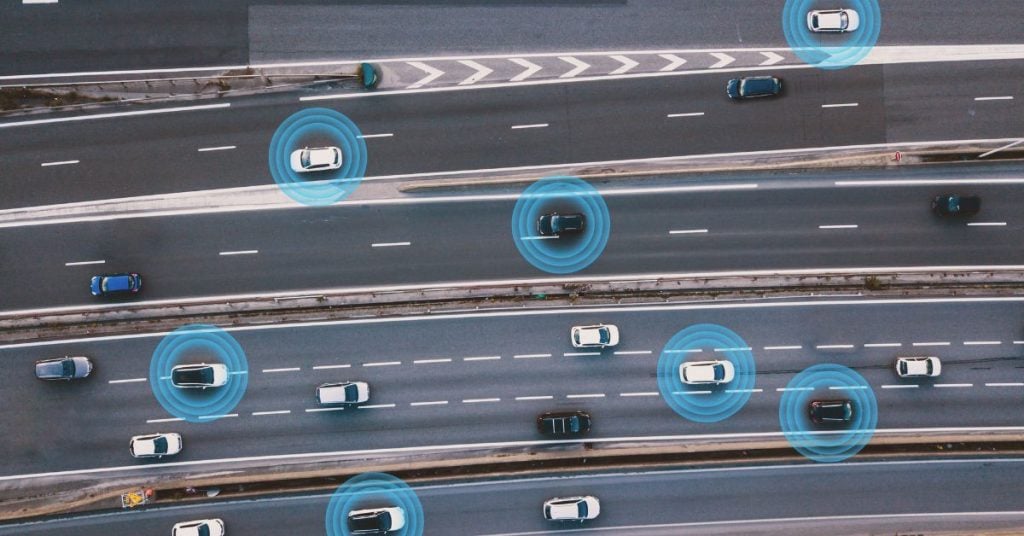Smart cities are revolutionising the way we live our urban lives. By harnessing the power of technology, cities can become more sustainable, efficient, and enjoyable places to live. From smart mobility to digital citizen services, various technological innovations can be used to create a more connected and responsive urban environment.
Moreover, as the world grapples with the climate crisis, cities are at the forefront of the latest technological advancements that can make a real difference. With over half of the world’s population living in urban areas, the trend of applying technology to solve urban problems is expected to continue.
This article explores what are some innovations in technology for smart cities, from smart mobility to advanced waste management and digital citizenship, with examples from the CEE region.
Smart Mobility

Smart mobility is using technology to create more efficient and sustainable transportation systems. This can include everything from electric vehicles and intelligent traffic management to smart parking and public transportation.
As an example, the Slovak capital of Bratislava has implemented an integrated transport system that utilizes a range of technologies to provide citizens with more efficient and sustainable mobility options. The system includes a combination of electric buses, trams, and trolleybuses, as well as a bike-sharing scheme and a mobile app that allows users to plan their journeys and pay for their tickets.
Another application of smart mobility systems can be found in Prague, the capital of the neighboring Czech Republic. The city has implemented a smart parking system that utilizes sensors to monitor parking spaces and provide real-time information to drivers. The system includes a mobile app that allows drivers to locate available parking spaces and pay without the need for cash.
Digital Citizen

Digital citizen services make it easier for citizens to interact with their city and its services. This can include everything from digital solutions for public services to smart streetlights and public spaces. Digital citizenship also encompasses bringing more transparency and access to public services, like waste management and the emission of documents.
In Estonia, the capital city of Tallinn has implemented a digital identity system that allows citizens to access a range of public and private services online using a single digital ID. The system is based on a secure digital signature that can be used to sign documents and transactions securely.
The country is always in the spotlight for being at the forefront of digital citizenship services. The biggest example is their e-citizenship initiative, which allows entrepreneurs and digital nomads to establish their companies in the country in an automated way, completely online.
Public Safety & Security

Smart cities can also use technology to enhance public safety and security. This can include everything from intelligent networks and communication technologies to advanced surveillance systems.
Warsaw, the capital of Poland, has implemented a smart city platform that integrates data from various sensors and systems, including CCTV cameras, traffic management systems, and emergency services. The platform enables the city to respond quickly to incidents and coordinate emergency services more effectively.
As expected, technologies that involve live camera monitoring raises questions about privacy rights. In 2019, Warsaw was ranked in the top 3 most surveilled cities in Europe. However, in 2022 the city did not figure in the list – more likely due to the high increase in camera surveillance in other European cities, rather than a decrease in utilization by the city.
Advanced Waste Management
Waste management is a crucial aspect of any city’s operations, and it becomes even more critical as cities grow and populations increase. Smart waste management systems aim to optimize waste collection, transportation, and disposal, reducing costs and environmental impact while improving overall efficiency.
Another example from the city of Prague was the installation of underground recyclable bins with smart sensors. With this technology, the city has visibility on the capacity of the waste bins, issues that might be clogging or blocking the bins, and also monitoring for possible fire incidents.
Solutions like these bring compounding benefits, as they also allow the city to plan waste collection more efficiently – which helps to reduce the number of trucks in the streets and lower traffic pollution.
Smart Energy
The concept of smart energy is to use advanced technologies and data analytics to optimize energy usage, while reducing carbon emissions and waste. It is built on the idea that by monitoring and analyzing energy consumption in real-time, it is possible to identify areas where energy is being wasted or used inefficiently and take steps to improve efficiency and reduce costs. Some of the technologies used in smart energy include sensors, smart meters, and energy management systems that allow for remote monitoring and control of energy consumption.
One example of the usage of smart energy is the development of smart grids, which use advanced communication and control technologies to enable more efficient and reliable distribution of energy. Another example is the development of smart buildings, which use sensors and automation to optimize energy usage and reduce waste. For instance, a smart building may automatically adjust lighting and heating based on occupancy patterns or use solar panels to generate energy on-site.
In Budapest, the capital of Hungary, a network was built which allows the city to remotely monitor and control the usage of street lights. According to its “Smart Budapest” vision, the city aims to reduce 30% of energy consumption by 2030. The IoT network installed to enable the project can also be used by external parties to develop their solutions.
E-Governance
E-governance refers to the use of digital technologies to improve the efficiency, transparency, and accessibility of government services and processes. The focus is to use digital technologies to provide more convenient and accessible services to citizens, streamline administrative processes, and enhance public participation in decision-making.
Initiatives in this area can take many forms, from the digitisation of paper-based processes to the implementation of online platforms for citizen engagement and participation. They enable better accountability and visibility of how public institutions are performing their services.
The city of Gdansk, in the north of Poland, implemented an e-governance system called “Open Gdansk” that allows citizens to access and monitor the city’s budget and public spending. The information is available through open systems, allowing anyone to integrate the data, and can be accessed through an interactive map.
The platform also allows citizens to submit proposals and vote on city initiatives through an online participatory budgeting system. Citizens can suggest and vote on projects in areas such as infrastructure, culture, and environmental protection, with the most popular projects receiving funding from the city budget.
Green Urban Planning
Green Urban Planning is a sustainable approach to urban development that seeks to create livable and environmentally-friendly cities. The concept involves the integration of green spaces, such as parks, gardens, and green roofs, into the urban landscape, as well as the implementation of eco-friendly transportation systems, renewable energy technologies, and waste reduction strategies. The goal of Green Urban Planning is to promote sustainable development and enhance the quality of life for urban residents, while also reducing the negative environmental impacts of urbanization.
In Germany, the city of Freiburg has been a leader in sustainable urban development for several decades, through its Green City project. The goal is to achieve 100% renewable energy by 2035 and carbon neutrality for the city by 2050. The project encompasses reducing greenhouse gas emissions, promoting renewable energy, and creating green spaces throughout the city.
Freiburg has implemented a range of initiatives to promote sustainable transportation, including a network of bike lanes and pedestrian zones, as well as a tram system that runs on renewable energy. The city has also invested in renewable energy technologies, such as solar panels and biomass heating systems, to power homes and buildings. In addition, Freiburg has created numerous parks and green spaces throughout the city, including the “Green City” district, which features sustainable housing and green roofs.







